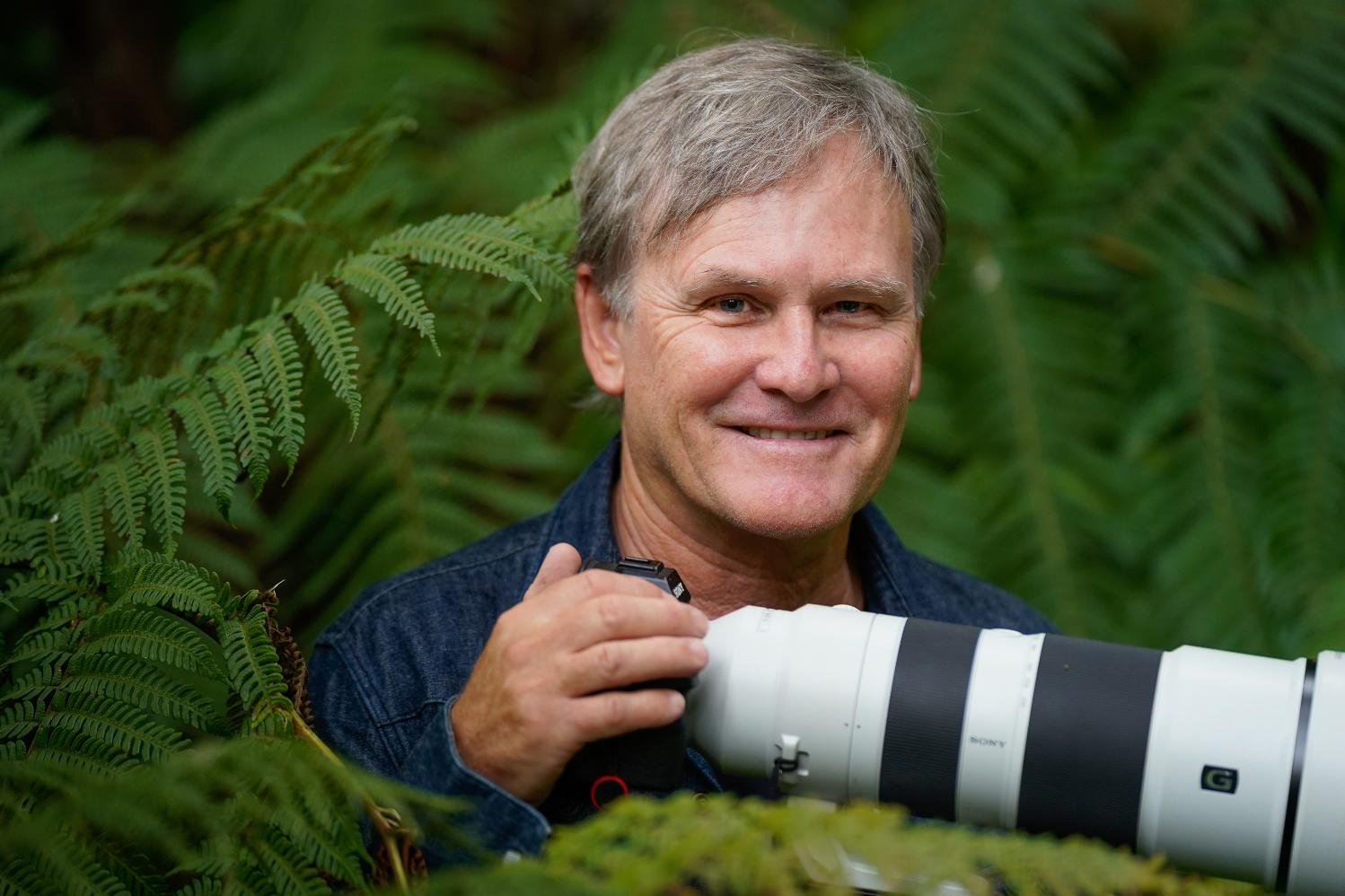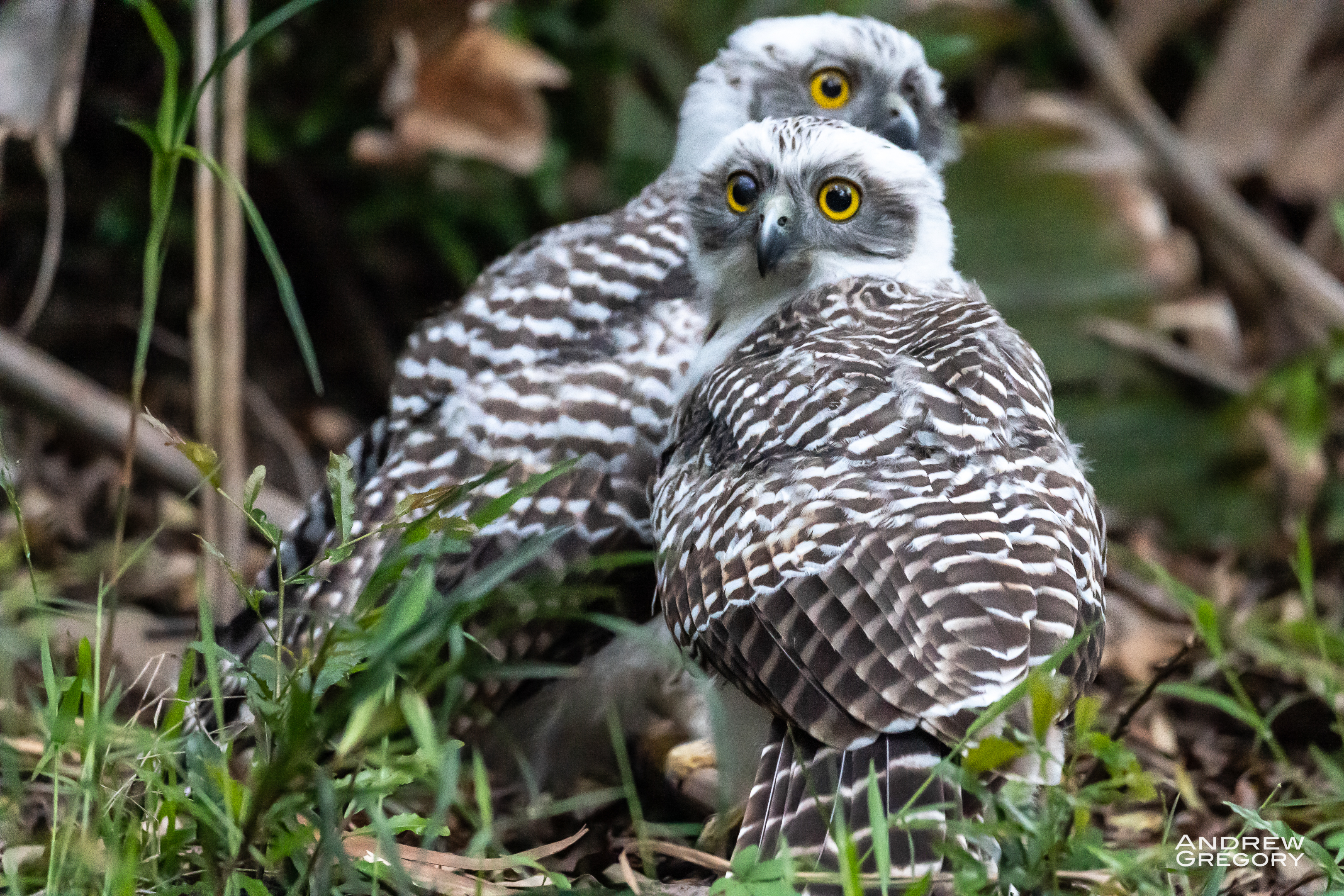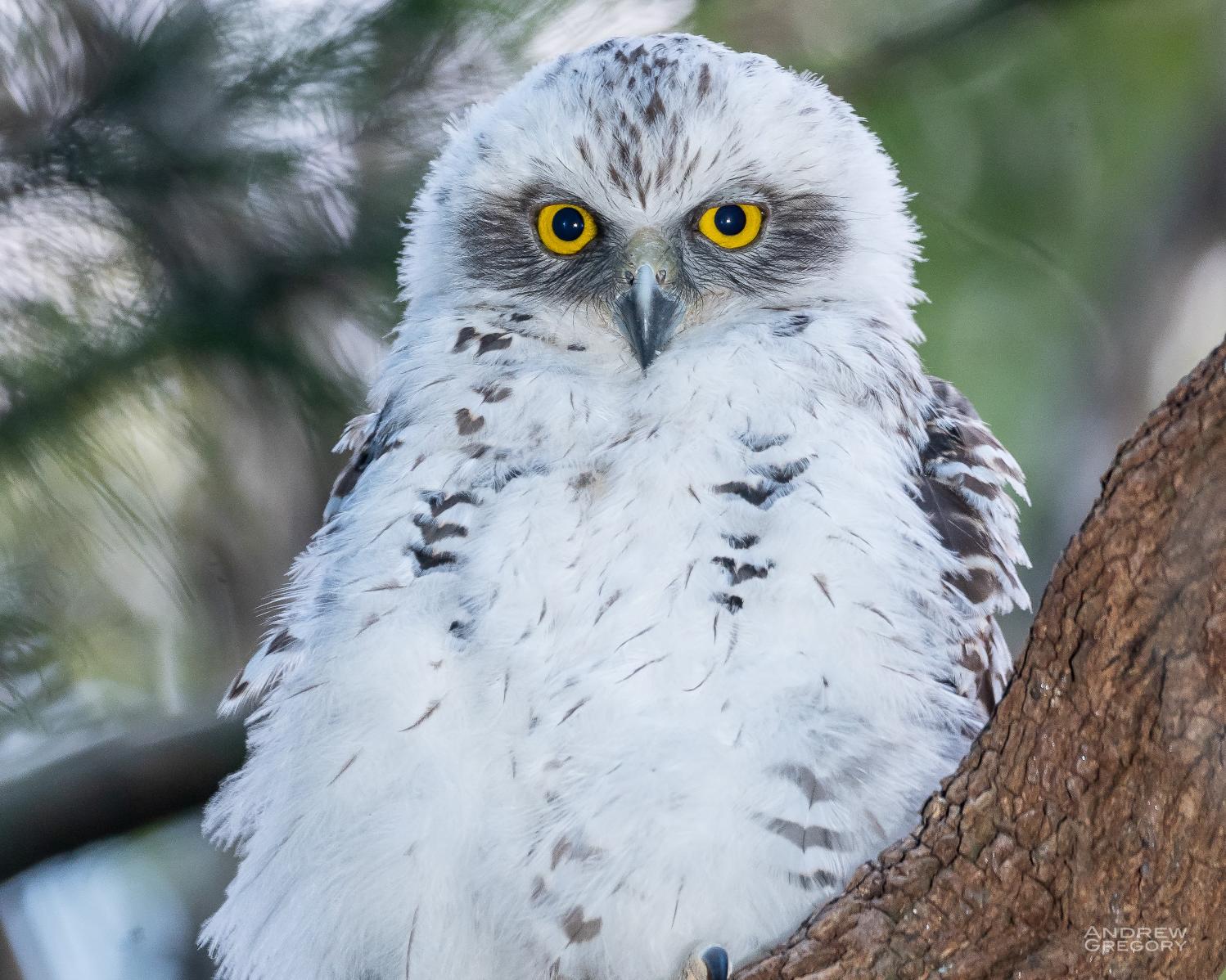February 21 - 27, 2021: Issue 484
Andrew Gregory

In 2020 Pittwater Online News ran a Profile on the Powerful Owl Project - which residents can still get involved in, even if it's just recording that they have heard these nocturnal birds around their home or have sighted one near where they live.
That same year the news service ran a Notice regarding public land belonging to Pittwater being encroached on and razed as part of a private owner seeking to commence a build. Although Council Officers ordered a stop-work, the contractors engaged went back the following day to complete destroying the adjacent bush with the result that two chicks in a Powerful Owl nest on the site were killed and the nesting site destroyed. Those living nearby could then hear the distressed parents calling for them for weeks afterwards - a haunting sound.
The incident points to the need for a Tree App along the lines of that provided by Mosman Council for residents, whereby they may check what they can and cannot do and where individual trees or public land begins and their property line ends. The Mosman Council Tree App also allows for the instant reporting of suspicious or illegal tree clearing and enables and empowers both residents and the Council to take quick action where such practices are being undertaken.
As part of Pittwater Online's Profile on the Powerful Owl Project we provided a link to an article written and photographed by one of Pittwater's PO Volunteers, who also happens to be a brilliant photographer for National Geographic.
Andrew Gregory's work is featured in a current exhibition called Portrait of Australia - 25 years of Australian Geographic at the National Museum in Canberra. Well worth having a look at when down south. The Exhibition is also available and touring around New South Wales this year - the link above will take you to the webpage that lists these locations and dates.
You can also listen to Andrew's podcast “Conservation starts in your own backyard” - an Australian Geographic talking Australia podcast at:
www.australiangeographic.com.au/podcast/conservation-work-starts-in-our-own-backyard-andrew-gregory
You can also find out more about his work and see his brilliant images at Andrew Gregory Photography: andrewgregory.com.au
This time of year you may be lucky to see newly fledged Powerful Owls making their way into the world outside the nest and, hopefully, finding a partner.
An insight into Andrew's experiences may further inspire you to listen or look a little closer at these hidden pockets of green tucked away out of sight and, hopefully, help Council and our wildlife, stop them being destroyed or encroached on by private usurpers.
When did you become aware you had owls near you?
The first morning in the house I woke to hear a cacophony of birds calling, When I opened the back door there was a big male owl roosting in the tree overhanging the house. Before that I lived just a kilometre away and used to see Powerful Owls occasionally, I’m often up in the early hours which is when they’re calling and returning home to roost.
Have you become involved in the Powerful Owl Project as a volunteer?
Yes, I’ve been a volunteer for four years. I first contacted the Powerful Owl Project when we had a visit from a newly fledged owlet, the family roosted in our backyard and I realised we had a nest tree nearby. When I found the tree there was a dead owlet at its base, and I realised how vulnerable they were at fledgling stage.
I observed the second breeding year and started monitoring another pair and now I’m closely observing 4 pairs in the local area. I still go out and look for other pairs and nest trees in nearby areas. I’ve also been involved with releasing owls that were rehabilitated at Taronga Zoo and rescues elsewhere.

Why is it important from your point of view/experience to monitor these sites?
Owls aren’t doing well in the bush and are moving into urban areas. Breeding pairs are dedicated to a nest tree, trees with suitable hollows are rare in urban backyards and reserves and competition amongst species for them is fierce.
I believe in the last few years there has been so much tree felling and clearing that the balance has changed. Pittwater wasn’t set up with wildlife corridors in the plan. Native wildlife in urban areas aren’t just confined to large reserves - our backyards form corridors and provide areas for breeding and shelter, particularly for the owl’s prey species.
There are also many other factors that contribute to a successful nest tree. It has to be the right tree in the right place. Many are in pocket reserves close to houses and the loss of surrounding trees can have an impact on the integrity of the reserve, also affecting the micro climate. Owners of properties in areas near nest trees also aren’t being informed, so clearing on land adjoining sensitive areas happens. There is also the 10/50 rule to contend with.
I took photos to prove an owlet was in a tree where a burn was planned and NBC has asked me to check other reserves before burns. Hazard reduction burns usually happen when the owls are nesting and the smoke can kill the young in the hollow or make the parents abandon the nests, so if The RFS or NBC is aware of the location of important nest trees they can use other techniques near the tree, such as manual hazard reduction or conduct the burn at less critical times.
If there is a Powerful Owl in the area, it means it’s a healthy eco system and has enough prey. Owls can also keep things in balance - amongst their prey are brush turkeys, rats and bats. At times of the year the owls move towards and roost near prey, such as the bat colonies in summer.
I remember going into Angophora Reserve when I was in primary school, the big old tree near the entrance was still alive and the canopy was so thick you couldn’t see the sky. I remember the koalas, the main cause of mortality leading to the loss of our koalas was dog attack. NBC has done nothing to acknowledge this and although they recommend keeping cats indoors, they don’t provide information on responsible dog ownership, including what to do in your own backyard, to help possums and bandicoots escape dog attack.
Unfortunately, dogs are still killing and displacing native wildlife. I see them in every reserve I go into, I have plenty of photos of wildlife killed by dogs and I’ve seen birds abandon areas frequented by dogs, owls have also abandoned favourite roost trees when people start walking their dogs near them.
The owls are top predators but they’re also vulnerable. They go down on the ground a lot, I’ve seen owls having a bath in streams or hunting on the ground like a kookaburra, particularly the young ones. The young owls are uncoordinated flyers and crash into things, 15% of owls die every year from collision, if they’re injured or on the ground, they’re extremely vulnerable.
Your wonderful photos of this pair are a celebration of this bird – do you have any favourite images among those you have taken?
I have over 5000 images of these birds and hours of footage. I love photographing the owls when they first fledge, the first few weeks they are pure white, and they have crazy antics, their eyes don’t move in the sockets so they’re constantly moving their head around. After a month they start to get chevrons on their chest, so they look different at every stage up until they’re about 6 months old. I’ve sent images to a researcher who has done work on sexing owls from the masking around the face. However, we can’t determine sex in young owls.
I’m working on a documentary and was setting up to document the 2020 breeding with converted infra-red cameras when the clearing happened and the owls were disturbed. It’s very difficult documenting owls because so much happens in poor light. I have spent a lot of time getting the birds used to me, so I’ve been able to get some beautiful portraits. If you are ethical and respect them, they recognise you and you can gain their trust. They’re extremely intelligent birds.
When/how did your love of photography commence?
I did photography for my major work in Art at Barrenjoey High School. I went to Sydney College of the Arts but my passion for landscape started when I lived in Western Australia, that lead to years wandering around remote Australia with my camera, supplying photo libraries and that lead to doing stories for leading publications like Australian Geographic.
What have been the most challenging assignments you have undertaken and why?
I hiked the Biafo and Hispar glaciers, the longest continuous ice corridor in the world, in the Karakoram, Pakistan. We climbed a mountain above Snow Lake, ran out of food and almost died. I received the Australian Geographic Spirit of Adventure Award when I kayaked down the Negri and Ord rivers in the Kimberly with Kieran Kelly. I filmed a saltwater crocodile swimming under my kayak, proving they are surviving in freshwater systems hundreds of kilometres from the coast. That lead to me doing a guide book called Kayaking Around Australia where I spent 2 years paddling awesome kayak locations, like the Whitsundays, Hinchinbrook and South West Tasmania.
I’ve done around 30 major features plus books (Colours of Australia, 2005, 2007) and calendars for Australian Geographic. I’ve covered most of the iconic Australian places, like Fraser Island, Dirk Hartog island, Ningaloo Reef, The Daintree Rainforest.
My interest in birds was ignited when I did a lengthy assignment on the 2008 flood. I spent 6 weeks with Dr Richard Kingsford and NSW National Parks while they surveyed outback rivers. I stood knee deep in Lake Narran surrounded by 40,000 nesting straw necked ibis, flew over 100,000 pelicans and kayaked through the flooded forests, full of breeding egrets and spoonbills in the Cutta Burra flood plain. The next year I took an inflatable boat down the Warburton River into Lake Eyre and witnessed another mass bird breeding event.
Over the last few years I have spent a lot of time in the Outback photographing and filming The Ghan, Indian Pacific and Great Southern trains with a huge drone for Journey Beyond and the BBC’s Great Australian Railway Journeys.
After the destruction of this pairs’ site, does it look like they may try for more babies?
Unfortunately, there was even more land clearing around the reserve. I planted many trees in the reserve last year. NBC has been doing occasional work but has limited funding for reserves. I’d like to see more people thinking about keeping and planting habitat in their own backyards and I’m hoping council can purchase some land to increase the size of the reserve.
If there is no more disturbance the owls should breed in the same hollow, it’s also possible to cut in and install artificial hollows, they’re not usually successful but may work at this site. The female owl is still coming back because the site has the natural attributes that attracted her in the first place. She’s calling at night near the hollow. The male prepares the hollow and mating starts around Easter. About 38 days for the eggs to hatch and another 38 days until they fledge, which is usually around the end of August. I’ve noticed that all the local owls fledge around the same time each year.
The young stay in the nursery site while mum and dad go off hunting and they head off on their own around the end of January. These birds are very appealing and captivating when they’re young and they became a part of our lives. They’re like big cats, it’s a bit like having a family of lions living in your backyard.
During the 2019 drought the creek went dry, so I put in a huge bird bath, and they took to it. During the smoky days they were in it at dawn, cooling down before going to roost, some days there were all four owls having a bath at once. On one particularly hot day the male roosted directly above the bird bath only 2 metres from our back door.
I used to get up in the dark and set the camera up ready for them to arrive at dawn, I’d hear them calling as they came home to roost. Some of the footage I’ve taken is the first detailed footage of owls having a bath. Owls have 3 eyelids and you can clearly see them washing their eyes out.
Powerful Owls in a bird bath
Published February 12th, 2020 by Andrew Gregory Photography
What makes this an ideal site locality for PO’s?
It’s sheltered from strong winds, has a natural water course with small pools. The water is important, the owls feel the heat and usually like to have a bath before roosting for the day to cool them down. In the summer months the owls will roost right over the creek.
There are significant spotted gums and cheese trees. It has a small micro climate keeping it cool. It has a variety of sheltered roost sites. I can tell which trees they’ll be in depending on the weather and how hot or windy it is.
It has very little disturbance and is a natural nursery for the young owls to shelter in while they grow up. They particularly like to roost in fig trees, cheese trees and flame trees. Some of their favourite trees like flame trees and bunya trees are native but not local so are still listed in the NBC exempt species list which means they can be cut down without a permit.
Pocket reserves frequently have species that are native but not to the local area, also properties adjoining these reserves may have key trees that wildlife depend on that can still be exempt and cut down, even if there are no other mature trees to replace them. This is something that NBC needs to revise if they want to protect native wildlife.
The site also attracts other wildlife like sugar gliders, micro bats, ringtail and brushtail possums and bandicoots, our owls aren’t hunting in the area they roost in. The owls can fly a long way to hunt and return with their prey caching it through the day and eating it in the evening. We see them with limbless torso’s, which means they have lightened the load to fly home. As well as possums they also eat bats, rats, brush turkeys and cockatoos. I have watched the young owls learn to hunt by trying to catch young brush turkeys. As soon as our owls were spooked, a flock of cockatoos moved into the area, the owls used to keep them away.
What are your favourite places in Pittwater and why?
I surf so I love the beaches, but I also like paddling a sup on Pittwater, particularly a paddle across Pittwater to Kuring-Gai or Portuguese Beach. I also love the headlands and Barrenjoey. The walk along North Palm Beach towards Barrenjoey is quiet and unspoilt and always makes me feel like I’m away from it all.
I have spent so much time in the bush and the gullies, and I have a few favourite spots in some of our reserves near where the owls breed, they pick the best secret spots.
What is your ‘motto for life’ or a favourite phrase you try to live by?
If you thought you heard something you did.
Listen to the birds and plant a tree, if not in your backyard find somewhere.
